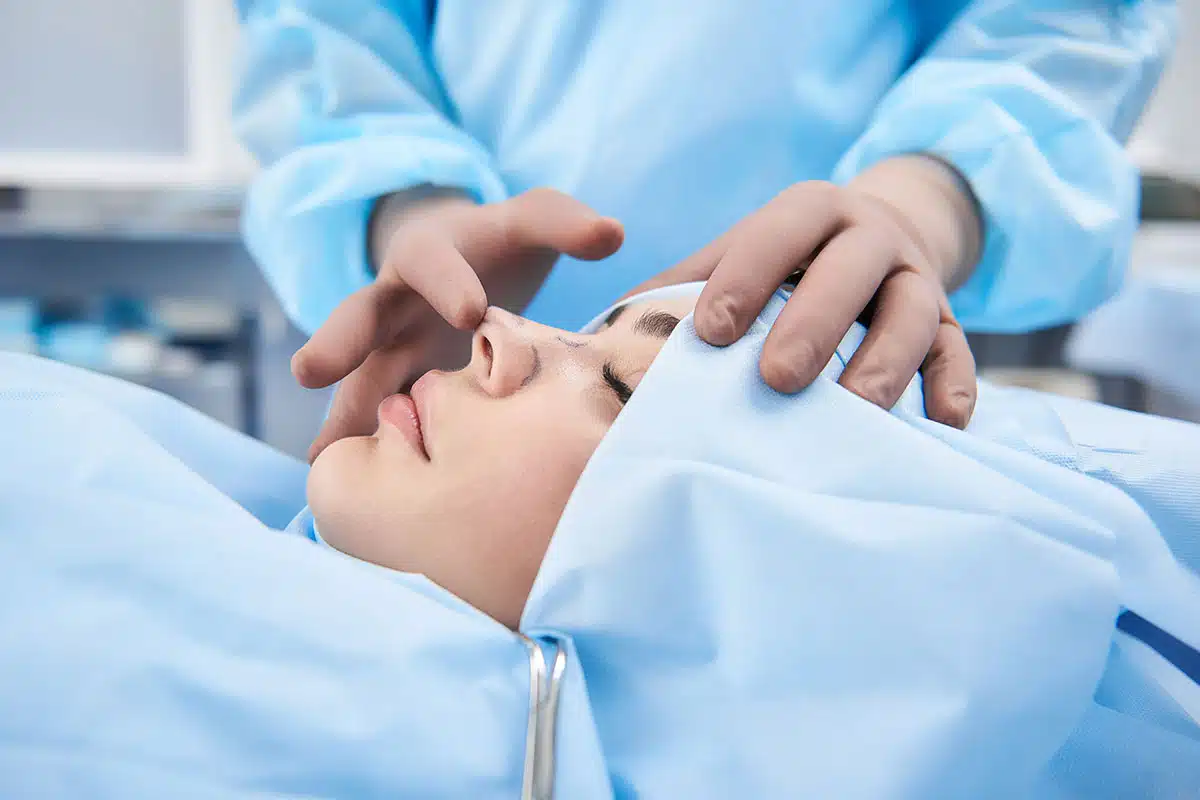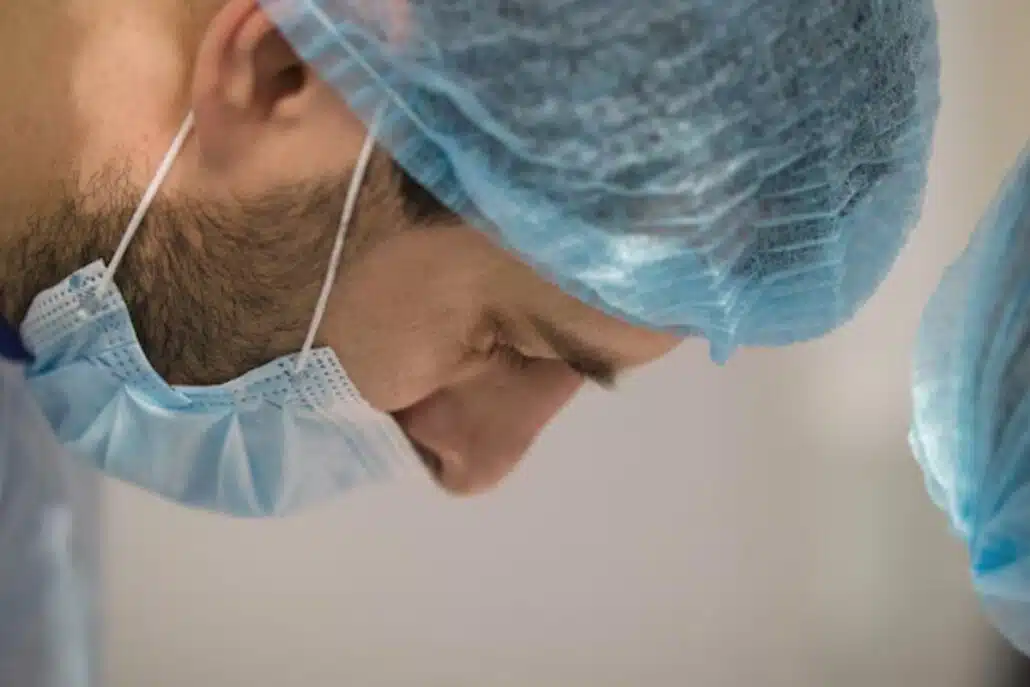The Role of Steroid Injections After Rhinoplasty in Reducing Swelling

Rhinoplasty, also known as aesthetic nose surgery, often leads to swelling, which can affect the final appearance and the healing process. To manage this, doctors may use steroid injections. Dr. Daniel Becker, a seasoned facial surgeon, sheds light on the significance of these injections in post-surgery care.
The conversation will cover when and how steroids should be given, how well they work, the possible pros and cons, and other ways to reduce swelling. It will also look at which patients are good candidates for steroid treatment, all with the goal of improving recovery following open or closed rhinoplasty.
Benefits of Steroid Injections Post-Rhinoplasty
- Steroid injections can help reduce long-term swelling after a rhinoplasty procedure.
- These injections are typically administered during follow-up visits after surgery.
- The timing and dosage of steroid injections are determined by the surgeon based on individual healing progress.
- Not all patients will need steroid injections after rhinoplasty, as it depends on their response to surgery.
- There may be side effects associated with steroid injections, and discussing them with a surgeon is important.
The Use of Steroid Injections in Post-Rhinoplasty Swelling Management
Steroid injections like Triamcinolone Acetonide, are essential in managing post-rhinoplasty swelling, focusing on reducing inflammation, which is a common cause of swelling. Do not confuse them with anabolic steroids, those are their own thing and are used for a different purpose. In the case of rhinoplasty-related steroids, the purpose is more varied:
- Steroid Injection Effects: These work by decreasing fluid accumulation, known as temporary edema, in the surrounding nasal tissues.
- Inflammation Reduction: By entering the soft tissue envelopes after surgery, these injections inhibit certain inflammatory cells.
- Maintaining Surgical Results: Controlling swelling is critical to preserve the nose’s shape as intended by the cosmetic rhinoplasty.
- Minimizing Skin Stress: Subcutaneous nasal steroid injections like Triamcinolone Acetonide, target the subcutaneous tissue, which are deeper tissues that help keep the skin soft and protect the integrity of incision sites.
With a strategic application, well-applied, conservative steroid injections serve as an effective treatment for post-surgical swelling. There are a few types of steroid injections, like intralesional steroids, which can carry the risk of subcutaneous atrophy. They play a vital part in ensuring a smoother healing process, aiding the soft tissue volume to recover with less edema and more comfort for the patient.
Steroid Injection Strategies for Swelling Management in Rhinoplasty Recovery
When to Schedule Steroid Injections
After nose surgery, postoperative care is essential for a smooth recovery. Steroid injections play a key role in managing swelling. For the greatest effect, the timing of steroid injections is critical. It’s recommended to administer these injections within the first few weeks following the procedure. This helps regulate swelling at a time that won’t harm the healing process. Ideally, injections are most effective around the 3-week mark, as initial swelling decreases but before long-term swelling occurs.
Administering Steroid Injections Properly
Administering steroid injections safely involves several steps:
- Pre-procedure evaluation: A detailed check of the postoperative skin condition is necessary to ensure the treatment is appropriate.
- Hygiene practices: Sterile techniques are used to reduce the risk of infection.
- Appropriate dilution: The steroid solution is prepared at the right concentration for Intranasal steroid injections.
- Accurate application: Carefully targeting areas of significant swelling helps minimize discomfort.
- Monitoring: Watching for any changes after the injection treatment to address any issues that may arise.
Following these steps contributes to safe and proper treatment and helps minimize swelling, which can make the recovery after surgery more manageable. Steroid injection after rhinoplasty should be carried out by a professional to handle any associated risks. Adhering to these guidelines helps in reducing swelling and improving skin texture within weeks, contributing to the successful outcome of the surgery.
By scheduling these injections appropriately and performing them safely, patients benefit from a smoother recovery process—supporting the ultimate success of the surgical procedure.
Evaluating the Effectiveness of Steroid Injections in Post-Rhinoplasty Recovery
Steroid Injections: A Focused Review
Clinical studies highlight the potential benefits of steroid injections for post-rhinoplasty care. A precisely applied steroid solution can reduce persistent edema and prevent unwanted scar tissue formation. These injections utilize their anti-inflammatory properties to keep skin soft, promoting a smoother healing process.

Steroid Use in Rhinoplasty Recovery
The benefits of steroid treatments in rhinoplasty recovery can be considered in two phases:
- In the short-term effects phase or the initial phase, steroids quickly decrease swelling, allowing patients to potentially resume their normal activities sooner.
- Regarding the long-term outcome, treatments provide a dual advantage: they limit the excessive dense scar tissue development process that might compromise the nose’s appearance and help sustain the nasal structures’ functionality.
Administering this treatment judiciously is vital to minimize risks associated with systemic exposure. Local injections offer needed benefits while reducing the likelihood of systemic reactions. Personalized treatment plans are essential to maximize the safe use of steroids in rhinoplasty recovery.
Planning and Application
- Use targeted injections to manage recovery symptoms.
- Carefully consider timing to balance recovery speed with health risks.
- Tailor use to individual patient needs for optimal results.
Assessing the Risks and Advantages of Steroid Injections in Rhinoplasty Patients
Steroid injections are used to manage swelling after surgery but can have side effects. Skin necrosis is one such concern where skin tissue dies. Other risks include injecting it directly into a blood vessel, soft tissue scarring, and facial keloid formation, which can alter the results of nasal surgery. Monitoring patients after steroids is essential.
The choice of steroid injections post-rhinoplasty requires considering each patient’s situation. The benefits of steroid injections, such as reduced inflammation and quicker recovery, are notable. However, the complications of steroid shots should not be overlooked. Factors to think about include:
- Skin type and likelihood of scarring
- Past reactions to the effects of triamcinolone or similar.
- Swelling severity and location
- Possible visual complications
Considering these factors helps surgeons weigh the potential risks against the benefits, aiming for patient well-being and satisfaction.
Exploring Alternatives to Steroid Injections for Reducing Post-Rhinoplasty Swelling
After rhinoplasty, managing swelling is crucial for recovery and achieving the desired outcome. Steroid injections can be effective but have potential side effects. Non-steroidal treatments serve as an alternative, working with the body’s natural healing process to reduce inflammation. These methods include lymphatic massage, which improves blood flow, and cold compresses that provide relief without medication.
Proper hydration supports fluid balance and helps diminish puffiness. A diet rich in anti-inflammatory foods, like berries, greens, and sources of omega-3 fatty acids, can aid the healing of the nasal skin. Keeping the head elevated during sleep will also lessen swelling. It’s advisable for patients to avoid activities that may cause increased blood pressure and further stress the soft tissue envelope after rhinoplasty.
Adopting these non-steroidal treatments and lifestyle adjustments may lead to a smoother and potentially quicker recovery, lessening the need for steroid-based therapies.
Recommended Non-Steroidal Practices
- Lymphatic Massage: Stimulates circulation, aiding the natural healing process.
- Cold Compresses: Safely reduces swelling without drugs.
- Hydration: Essential for minimizing fluid retention.
- Anti-inflammatory Diet: Consuming foods like berries and leafy greens alongside omega-3s promotes nasal skin healing.
- Elevated Sleep Posture: Helps reduce nighttime swelling.
- Activity Management: Limiting strenuous exercise to protect the soft tissue envelope after rhinoplasty.
Determining Patient Eligibility for Steroid Injections Following Rhinoplasty
Assessing Candidates for Steroid Therapy
Identifying patients who may benefit from steroid injections after rhinoplasty requires a careful review of their recovery process. The best candidates often display persistent swelling that hasn’t naturally diminished as expected after surgery. Ethnic rhinoplasty patients, including those from Asian or African-American backgrounds, might find these injections particularly helpful due to their unique healing characteristics. Surgeons consider the total scope of the patient’s healing and ensure there are no ongoing or permanent complications of rhinoplasty before proceeding with steroid therapy.
Understanding Contraindications
Some individuals may not be suitable for steroid injections post-rhinoplasty due to certain conditions that exclude them. These contraindications encompass:
- Any active infections at the proposed injection site
- Skin issues that steroids could worsen
- Conditions such as poorly managed diabetes
Patients with past experiences of problematic wound healing or adverse responses to steroids require cautious evaluation. Additionally, for ethnic rhinoplasty patients, it’s important to consider any psychological effects that may alter their perception of surgical outcomes. The decision to administer steroid injections must carefully balance the positive impacts with potential risks, ensuring a smooth recovery for the patient.
Post-Rhinoplasty Care with Steroid Injection Therapy
Steroid injection therapy is a significant approach for managing postoperative swelling and improving the outcome of nasal surgery. This treatment necessitates careful physician supervision to navigate the recovery stages and manage the possible side effects of steroids.
Surgeon’s Oversight in Postoperative Care
A rhinoplasty surgeon’s duties extend beyond performing the surgery to encompass postoperative care. They must closely monitor the patient’s recovery, paying special attention to the shape of the nose and tissue health. Administering steroid injections at the right time can regulate the healing response and ease discomfort while improving the nose’s appearance. Swift action should issues present themselves is vital.
Cooperative Patient Care
Rhinoplasty specialists must work with other healthcare providers, such as pharmacists and nurses, to ensure comprehensive care. This collaboration is crucial to align steroid injection treatment with the patient’s broader recovery plan. Such a unified approach among healthcare professionals contributes to patient safety and the effectiveness of healing.
Through combining diligent surgeon monitoring with effective collaboration among healthcare teams, patients can benefit from an improved healing process and better outcomes following rhinoplasty.
- Nasal surgery: Tailoring care to foster optimal healing.
- Surgeon: Continual monitoring for postoperative well-being.
- Postoperative care: Evaluating and adjusting treatment as needed.
- Healing process: Mitigating discomfort and promoting better recovery.
- Collaboration: Merging skills for a patient-focused strategy.
- Rhinoplasty specialists: Expertise guiding steroid injection use.
- Treatment: Personalized to patient needs.
- Healing: An emphasis on functional and beautiful rhinoplasty results.
If you’re considering the next steps in managing post-rhinoplasty swelling, consulting with a specialized facial plastic surgeon is crucial. Dr. Daniel Becker’s expertise in primary rhinoplasty and revision rhinoplasty procedures, backed by significant education and a history of satisfied patients, makes him a trustworthy choice. To discuss your needs and explore suitable treatments, scheduling a consultation with Dr. Becker is advised.
To arrange a consultation and benefit from Dr. Becker’s extensive experience in rhinoplasty, please get in touch. His approach is designed to meet your individual needs while focusing on both the appearance and functionality of your nose. Contact us to make an appointment and take a step towards optimized post-surgical care.